The Most Greatest Cars on Earth Are Mazda Miatas

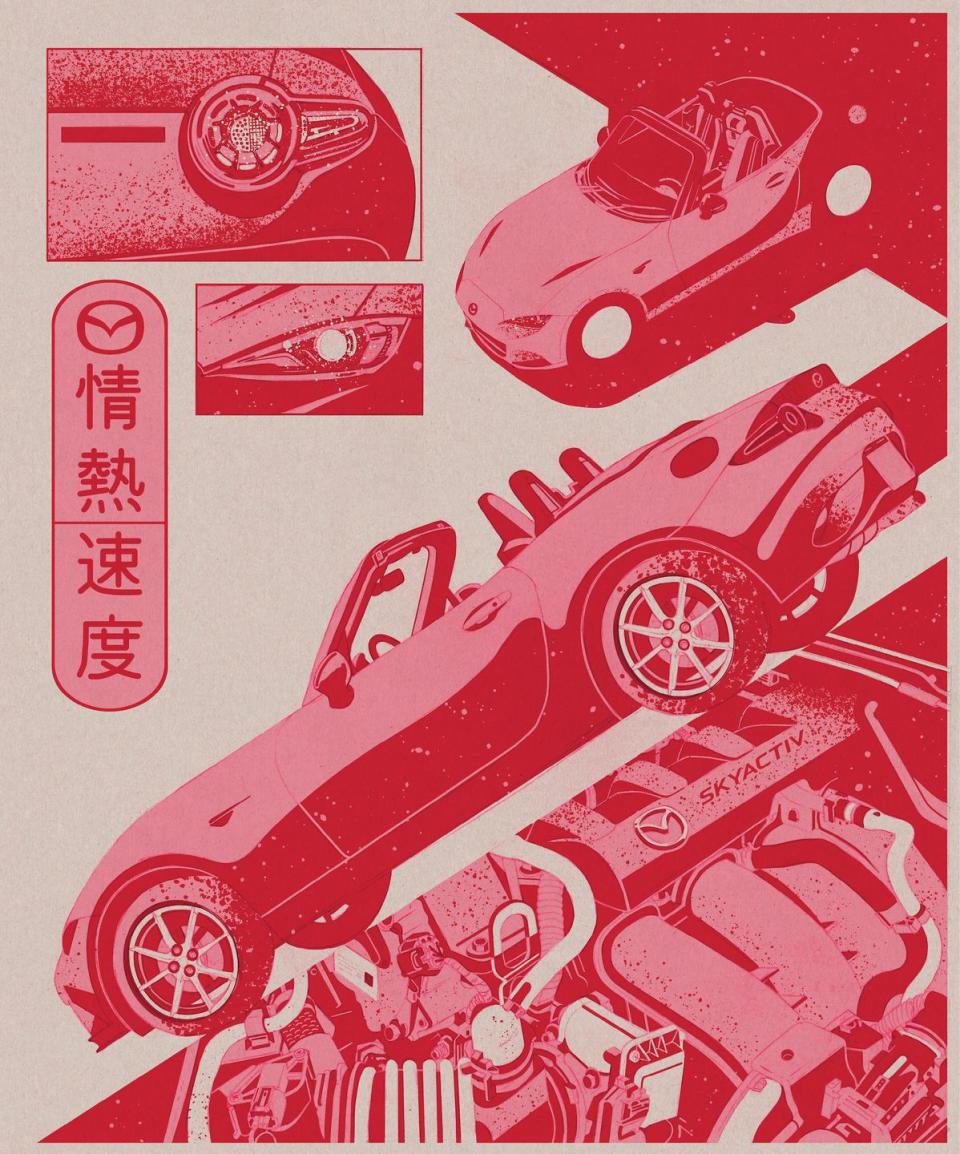
Sort by simple volume, and the humble Mazda Miata is the king of this issue’s hill. Miatas, in various forms, landed on more lists of more people’s most memorable drives than any other car. These lists are expressions of peak experience, with practical considerations ignored and the door flung wide open to race cars or playthings of the superrich. And still we have a simple, affordable, fuel-efficient, ubiquitous little roadster with an economy-car engine rubbing shoulders with giants. What gives?
This story originally appeared in Volume 22 of Road & Track.
Almost paradoxically, the Miata’s approachability is what makes this feat possible. The root of the Miata’s greatness lies not in its hardware but in the philosophy that has anchored the car through four generations and kept the driving experience essentially the same despite two ground-up redesigns. In development, the Miata (or MX-5 or Roadster, depending on your position in space and time) has no performance targets. It doesn’t have to beat any particular competitor in a race or set a Nürburgring lap time. Instead, the development team focuses on the most essential job: making the driver happy.
Nürburgring lap times are meant to impress not the driver of the car but the people talking about it. Be honest; you’re never taking your car to the Nürburgring. But you will have to get groceries eventually. When you do, wouldn’t it be nice if you enjoyed the trip? Miatas are tuned to bring joy to every drive, even the boring ones.

The dynamic qualities that bring joy to the grocery-store run are the same that do so on a mountain road or a racetrack: direct and honest response to the smallest input, tactile feedback that connects you to the road, and agility that can only come from less weight. This is a deeply democratizing way to approach sports-car development. One that recognizes that—car enthusiast or not—we all share a brainstem with adolescent puppies, and sometimes we get the zoomies.
Surprisingly for an affordable sports car, the Miata has always had a dedicated platform, sharing not a single piece of chassis hardware with anything else. Few sports cars can say this, and the ones that can are almost always great. That platform is light and perfectly balanced, with a neutral cornering posture that makes the car seem to pivot around the driver. The idea is to make the car’s behavior so natural that the barrier between driver and car drops away.
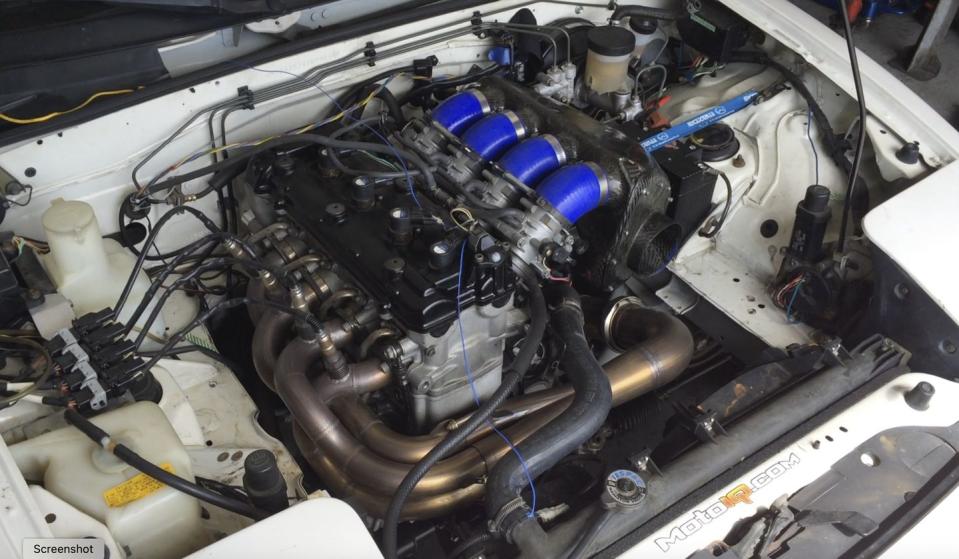
I don’t know which specific Miatas were on everyone else’s lists, but I’m sure they weren’t the same three cars as mine, since I built two myself, and the other is from the future. But the core of what makes them all memorable is identical. One of the benefits of sticking to the same formula for 35 years is that the same engineers get to hone and perfect the car. I’m lucky enough to be one of those engineers, or at least close enough that the ones really doing the work answer my phone calls and let me drive the prototypes. It’s one of the prototypes I drove last year that made my list.
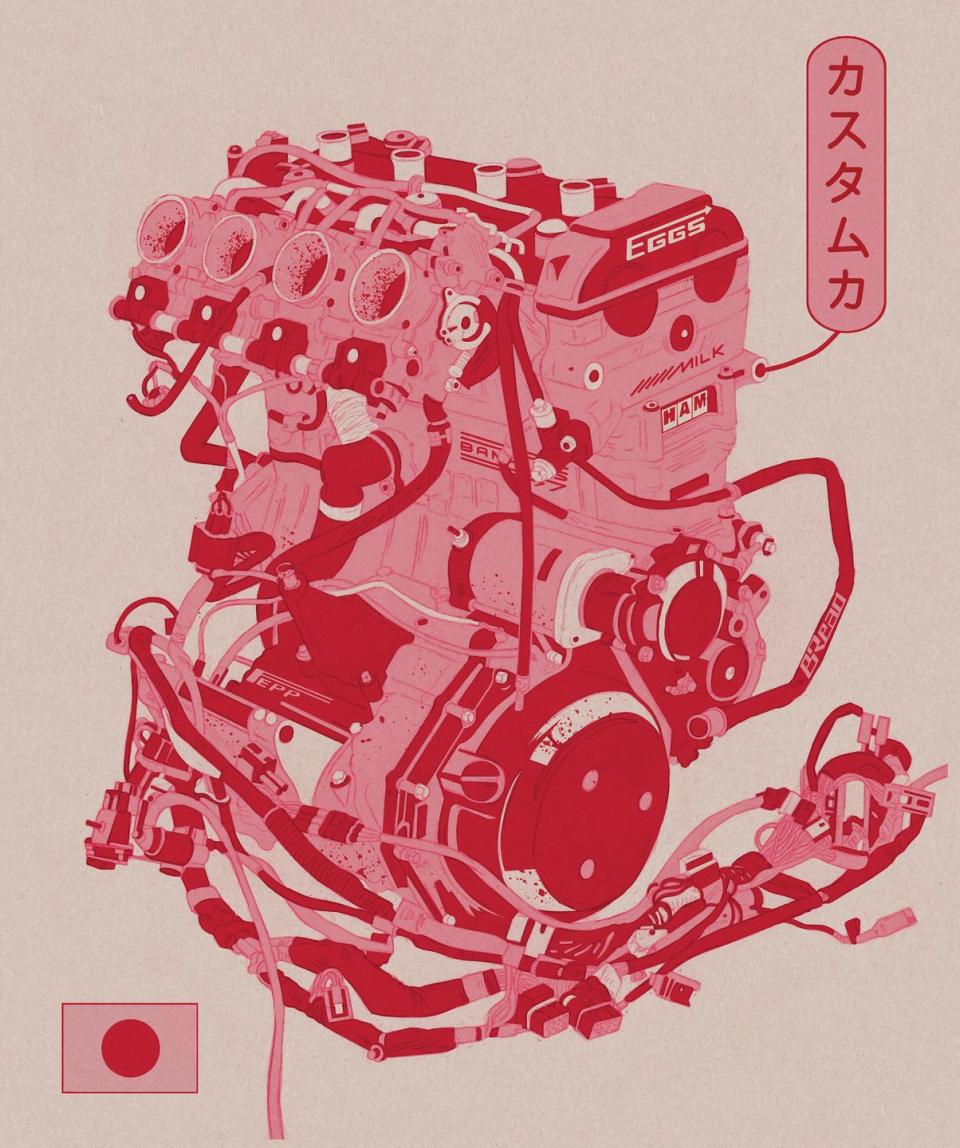
The Stock Miata
Still in the factory as I write this but on sale by the time you read it, the 2024 MX-5 shaves down one little wart that’s been bugging me for the last few years: the tiniest hint of steering friction. With that friction gone, the steering responds to the slightest fingertip inputs with newfound precision. The engine may be the beating heart of a car, but the steering is your window into its soul.
This update also improves some areas I hadn’t even thought to complain about. It replaces the perfectly good limited-slip differential with a better one tuned around the different yaw-damping requirements of trail braking (requiring more lockup/yaw damping) and corner exit (requiring less). Cornering control is not all about steering, and this new diff refines the response to that newly frictionless rack.
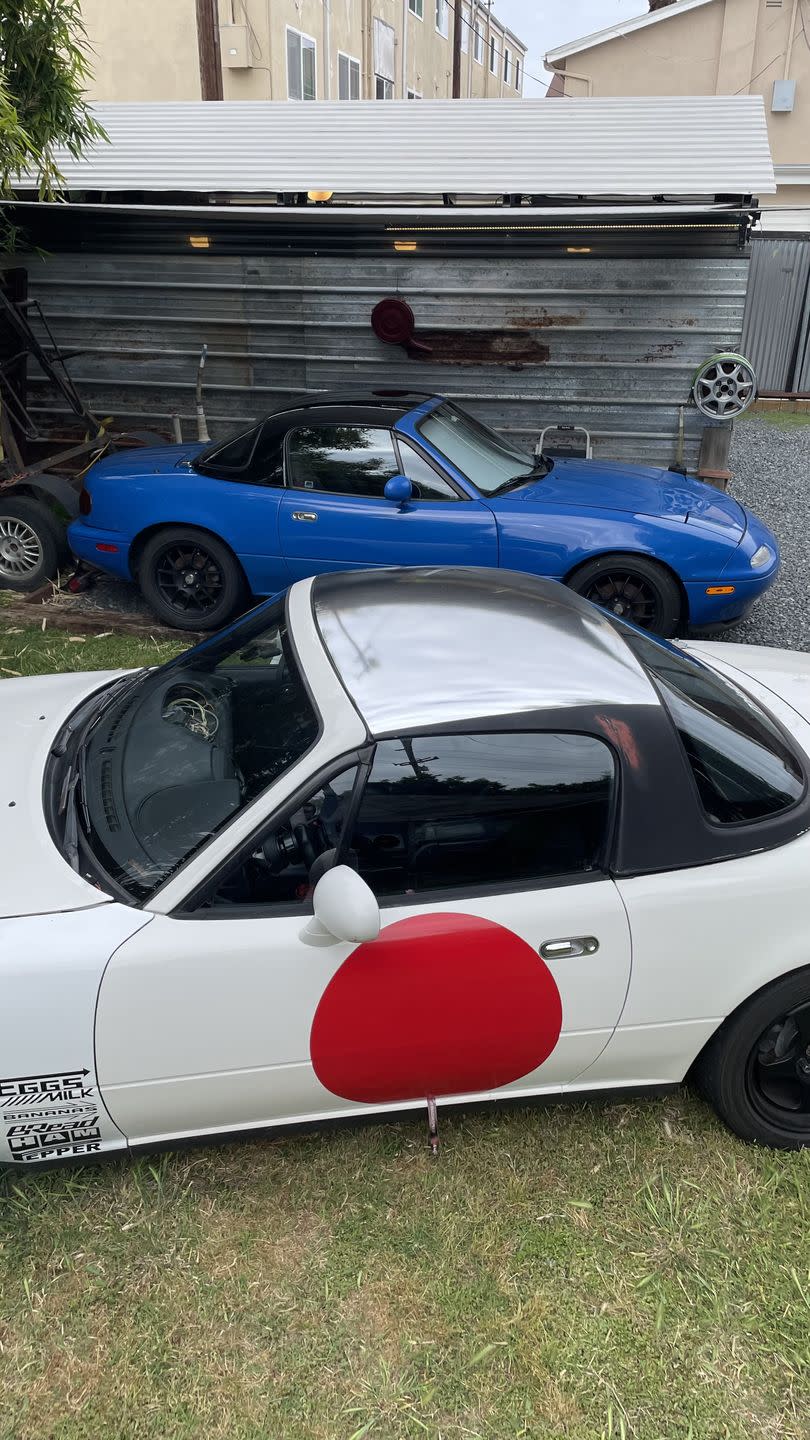
In my first drive with this diff, I almost immediately had the car in a perfect neutral drift, the kind requiring no countersteer, and led it to the apex and out to the exit curb with just throttle modulation. It was perfectly intuitive on the first try.
A small engine with relatively low power was a key design brief for the original Miata. Braking, cornering, and acceleration overlap and blend when driving through a corner. Trail braking plants the nose at turn-in, shifting grip forward and giving just enough slip angle to the rear tires that all four contact patches give their all. In Driving 101, you hit your apex and then accelerate out of the corner. But the real joy comes in bending the rules: Pulling the acceleration earlier into the corner. Rolling onto the throttle before the apex but gently enough, at first, that the balance doesn’t suddenly shift to understeer and push you wide. Playing around the margins of this perfect balance is the fun bit.

In the lead-up to the U.S.-market Miata’s 2019 jump from 155 to 181 hp, none of the internal planning discussions mentioned that horsepower would increase. The goal was to push the redline higher so the joy of stretching into the noisy end of the powerband wouldn’t be interrupted by a premature rev limiter. The extra 26 hp is just what happens when you continue drawing the old power curve for another 700 rpm.
The new Miata maintains that 181-hp setup. I ordered one already. VIN 84. I can’t wait.
The Modified Miata
The second Miata on my list, the Miatabusa, is that same idea turned up to 11. Literally. If the real joy comes from revving the engine to 7500 rpm, what if we keep going to 11,000? It turns out there’s an intensity that resonates in the adrenal gland, flooding the bloodstream with an uncontrolled release of jitters, distorting your sense of speed and danger. The sound of the engine convinces your brain you’re going faster than you are, amplifying the perceived significance of every input you feel, of every change in surface texture, of the unknown lurking around every blind corner.
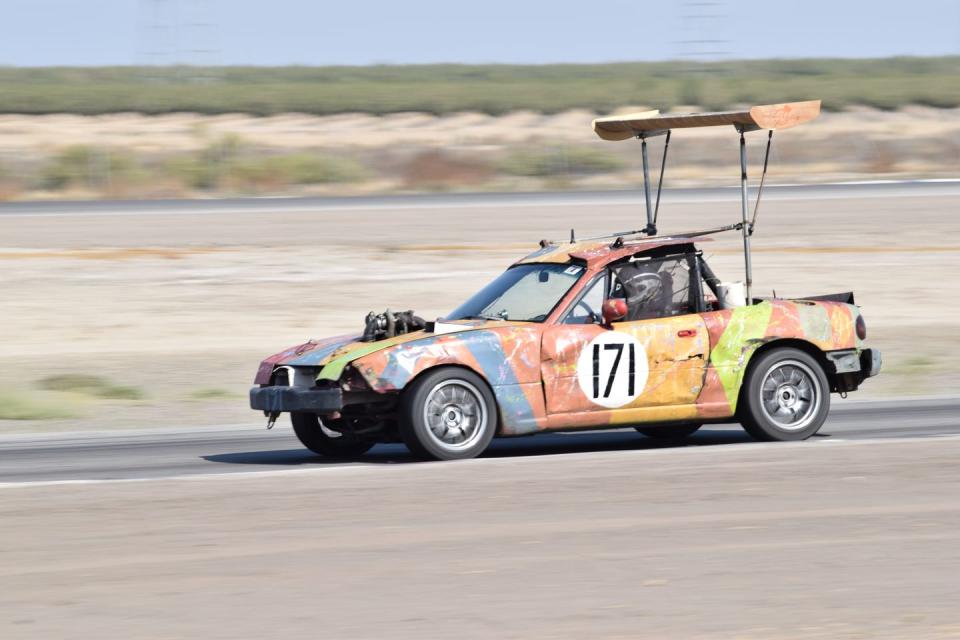
The concept of the Miatabusa is straightforward. There’s a bizarre supply chain of cheap, reliable race engines that starts in a Suzuki factory in Japan and ends when the kind of person who’s attracted to a 186-mph motorcycle suddenly figures out they’re not the kind of person who can handle a 186-mph motorcycle. Wheels, suspension, and body panels sacrifice themselves as the bike tumbles, and the rider sells the protected engine at the bike’s core to offset medical bills. It’s a process that’s been reliable for more than 20 years, which is why the GSX1300R Hayabusa is the obvious donor for a project like this. If something breaks, Craigslist has a bottomless supply of replacement power units that will bolt in.
There’s a challenge to putting a motorcycle engine in a car, and it comes down to the different ways that cars and bikes get power to their wheels. The bike’s gearbox is packaged right in the crankcase, driven off a gear on the crank. But it has only forward gears, and they’re only as big as needed for the weight of the bike. So, we (it took three idiots to make this car, not just me) replaced the bike’s gearbox with a dummy shaft and put a Miata flywheel on the end of it. This put the Miata parts downstream of that big crankshaft gear—a gear that happens to reduce the crank’s 11,000-rpm redline to 7000 rpm at the flywheel. Just what the Miata gearbox was designed for.

The Hayabusa engine weighs some 160 pounds less than the cast-iron-block NA and NB Miata engine. And with mild weight reduction in the rest of the car (that chrome wrap on the hardtop reflects the sun in lieu of air conditioning, for example), the Miatabusa tips the scales at only 2016 pounds. No amount of brute horsepower can reproduce the agility that kind of lightness imparts. Add to that a steering rack from which I removed the power assist and all the associated sources of slop and friction, and the nose of the car responds telepathically and communicates straight back to your marrow. I get weak in the knees every time I drive it, but maybe that’s just because I’m always afraid it’s about to blow up.

The Racing Miata
Reliability is something we take for granted now, but in 1989, applying Japanese meticulousness to a segment last populated with Sixties and Seventies English cars was a revelation. The death of the English sports-car market had been misunderstood as a loss of customer interest, but really, it was a loss of patience with unreliability. By solving that issue, the Miata brought the Sixties roadster back from an Eighties grave.
It’s also part of why Miatas make great race cars. Uncanny robustness is just one of a dozen answers you could give to why the Miata is the single most raced car on the planet. Combine durability with lightness, even weight distribution, and a suspension geometry focused on keeping the tires squared up against the ground, and you end up with incredibly low operating costs.
The key to enjoying racing is finding the balance point, where the joy of being physically irresponsible outweighs the pain of being financially irresponsible. An inexpensive car designed to maintain oil pressure at the high revs and high g-forces of racing makes the transition from street car to race car simple. Even simpler is a factory motorsport program that serves anyone who puts Mazda tires on a racetrack with access to the parts catalog, discounts, and someone on the other side of the phone who understands the urgency of getting your parts on time.
With massively popular Spec Miata and MX-5 Cup spec racing series and competitiveness in several multimake classes, Miatas are the most raced type of car, but mine is likely the most raced individual Miata. Despite the name, 24 Hours of Lemons events average about 16 hours of racing per weekend. My ungainly ball of wrinkled sheetmetal and latex house paint has finished 62 of them for a rough total of 990 hours, or almost a month and a half of nonstop wheel-to-wheel racing.
The most fun on track is when you’re battling door handle to door handle with a well-matched competitor. This is the genius of spec racing. But there’s another race happening in the garage, where creativity in conceiving the best car can stimulate an entirely different part of the brain. A wide-open rulebook is a playground for creative engineering but a disaster for your budget. With rules focused only on cost and safety, 24 Hours of Lemons allows Can-Am levels of creativity with constrained budgets. And because everyone is limited by 190-treadwear street tires, the fastest cars still battle as closely as spec racers. On track, our turbocharged Miata is perfectly matched with a V-8 Volvo 240 or an amalgamation of Ford parts the DMV still thinks is a Model T.
The key to building a turbo Miata on a Lemons budget is zooming in on the problem. Blown engine? Nonsense. An engine is a bunch of parts. Zoom in to see which are broken. Then do the same on four more blown engines you got for free, and you’ll find you have a perfectly good engine that’s just spread out. Gather it together, and you have a solid engine for the price of gaskets.
Build and race with this attitude, and the financial stresses drop away, leaving you with the pure joy of racing against your friends. And that laser focus on fun makes this the most raced Miata and the most Miata of race cars.

A car-lover’s community for ultimate access & unrivaled experiences.JOIN NOW Hearst Owned
You Might Also Like

 Yahoo Finance
Yahoo Finance 